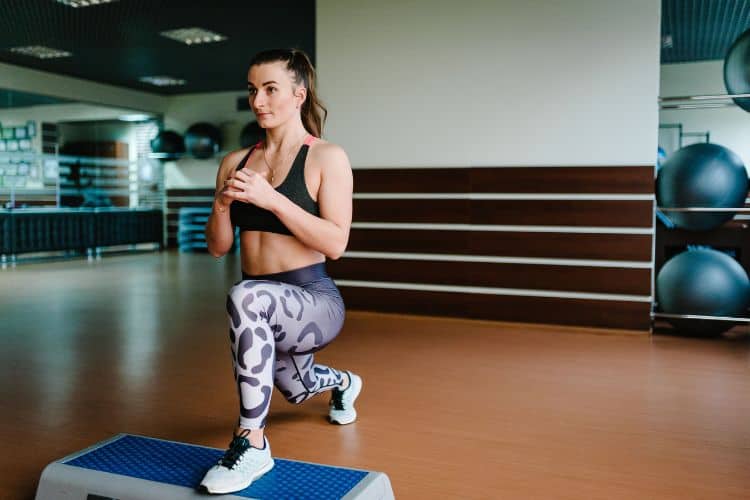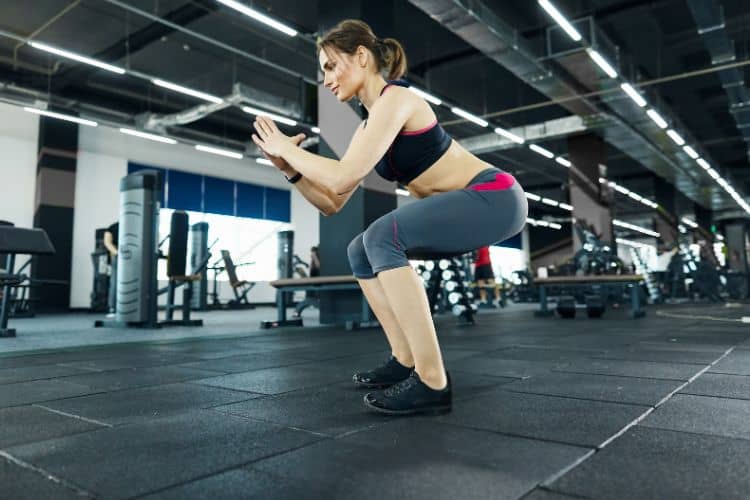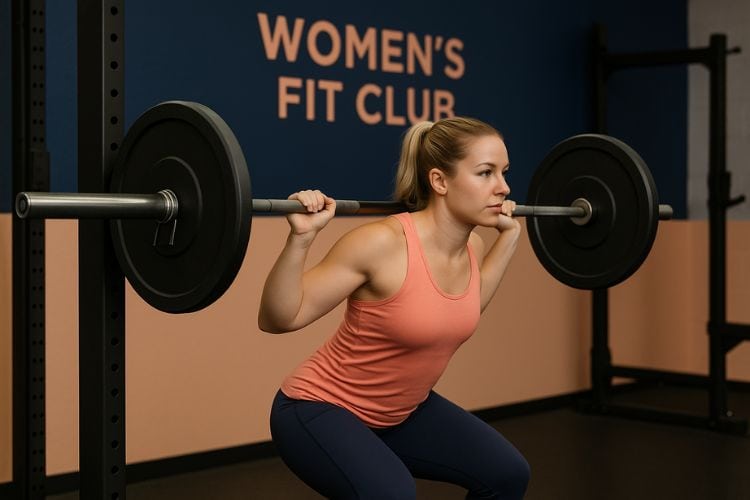Sign up for workout ideas, training advice, reviews of the latest gear and more.






When time is limited, but you still want to hit every major muscle group, a 45-minute full body barbell workout routine is your ultimate solution. Barbells are one of the most effective training tools for building strength, power, and lean muscle. This single piece of equipment can transform your physique and elevate your fitness level—whether you train at home or in the gym.
In this workout guide, you’ll discover a step-by-step barbell routine designed to engage your upper body, lower body, and core, boost your metabolism, and help you burn fat efficiently. With structured circuits, strategic rest intervals, and scalable progressions, this program delivers maximum results in just 45 minutes.
A full body workout using a barbell combines compound exercises that engage multiple muscles at once. This efficient approach allows you to train your entire body in less time compared to traditional split routines.
In just 45 minutes, you can target your legs, back, chest, shoulders, arms, and core without switching between multiple machines. The barbell allows for smooth transitions between lifts, minimizing downtime and maximizing intensity.
Barbell movements like squats, deadlifts, and presses develop major muscle groups, reinforcing functional strength that improves everyday movement, posture, and athletic performance.
Because these lifts engage multiple muscles simultaneously, your heart rate rises and your metabolism stays elevated long after your session—a process known as EPOC (Excess Post-Exercise Oxygen Consumption).
Training with a barbell challenges your stabilizer muscles. Core activation during multi-joint lifts enhances balance, coordination, and body control.
This 45-minute full body barbell workout is structured into four main circuits—each designed to focus on specific muscle groups while keeping your heart rate elevated for a calorie-burning effect.
Before loading the barbell, take 5 minutes to prepare your body for heavy compound lifts. A dynamic warm-up increases blood flow, improves mobility, and reduces injury risk.
Perform each for 30 seconds, repeat the circuit twice:
Once you’re warm, load your barbell with a moderate weight—enough to challenge you but not compromise form.
These barbell exercises target your glutes, quads, hamstrings, and core, helping build strength and stability from the ground up.
The back squat is the king of all lifts. It strengthens your lower body, engages your core, and promotes hormone release for muscle growth.
Focuses on your hamstrings and glutes while improving hip mobility.
Lunges challenge your unilateral strength and balance.
Rest: 60 seconds between sets.
This circuit focuses on your chest, shoulders, and arms to sculpt and strengthen the upper body.
The bench press is a classic upper-body builder.
Targets shoulders and triceps for upper-body strength and definition.
One of the best moves for a strong back and posture.
Rest: 60 seconds between sets.
Your core and back muscles stabilize every barbell movement. This circuit enhances midsection strength and spinal alignment.
The deadlift works your entire posterior chain—glutes, hamstrings, and back.
Excellent for strengthening your lower back and hamstrings.
An advanced core stability move.
Rest: 45 seconds between sets.
Finish strong with an explosive barbell metabolic finisher that ignites your metabolism and pushes your endurance.
Perform the following moves back-to-back for 5 rounds:
Rest: 30–45 seconds between rounds.
Don’t skip your cool-down. Static stretches enhance recovery and reduce post-workout soreness.
Hold each stretch for 20–30 seconds:
Breathe deeply and focus on releasing tension from your muscles.
Lifting heavier doesn’t always mean better. Start with a manageable weight and perfect your form before progressing.
Every barbell movement should activate your core to stabilize your spine and prevent lower-back strain.
Avoid jerky movements or momentum. Control the eccentric (lowering) phase for better muscle engagement.
Increase weight or reps gradually each week. This steady progression leads to consistent strength gains and muscle growth.
Logging weights, reps, and rest times helps monitor progress and keeps you accountable.
Barbell training recruits multiple muscles—legs, glutes, back, chest, shoulders, and arms—creating balanced strength development.
Heavy compound lifts elevate your heart rate and trigger calorie burn long after your session ends.
Movements like squats, rows, and presses mimic real-life activities, improving overall strength and athletic ability.
Barbell lifts naturally strengthen the posterior chain, improving posture, spinal health, and stability.
Resistance training with a barbell strengthens bones and joints—vital for long-term health and injury prevention.
Here’s how you can incorporate this 45-minute routine into your week:
| Day | Workout | Focus |
|---|---|---|
| Monday | Full Body Barbell Routine | Strength + Power |
| Tuesday | Active Recovery / Yoga | Mobility |
| Wednesday | Full Body Barbell Routine | Hypertrophy |
| Thursday | Rest or Light Cardio | Recovery |
| Friday | Full Body Barbell Routine | Endurance |
| Saturday | Optional Bodyweight HIIT | Conditioning |
| Sunday | Rest | Recovery |
By alternating rest and training days, your muscles have adequate time to recover and rebuild stronger.
Consume a protein-rich meal post-workout to promote muscle repair. Include lean proteins (chicken, eggs, fish), complex carbs (brown rice, oats), and healthy fats (avocado, nuts).
Hydration supports muscle function and reduces fatigue. Aim for at least 2–3 liters of water daily.
Muscle recovery happens during sleep. Strive for 7–9 hours per night for optimal performance.
Protein powder, creatine, and omega-3s can support muscle recovery and strength gains when paired with a balanced diet.
If you’re new to barbell training:
Always listen to your body—pain is a signal to stop and reassess.
A 45-minute full body barbell workout routine is a game-changer for anyone seeking efficient strength training. With consistent effort, proper form, and progressive overload, you’ll build lean muscle, burn fat, and elevate your overall fitness.
Whether you’re training at home or in the gym, this barbell workout offers a powerful foundation for long-term strength and conditioning. Dedicate yourself for a few weeks, and you’ll notice not just physical transformation—but newfound confidence and energy.
Stay up to date on the latest women’s health, fitness and lifestyle trends and tips.